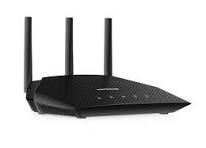Multiple Devices to Connect to a Netgear Range Extender
With internet use becoming more expansive by the day, ensuring that connectivity is unbreakable with all your devices becomes more indispensable. Be you streaming videos, attending video conferences, or just browsing; a strong and stable connection becomes the order of the day. With a Netgear Range Extender, you will find this connection very enhanced in quality, even with multiple devices connected. In this guide, we will discuss how to connect multiple devices on a Netgear range extender and bring out the full performance of your home or office network.
Why Use a Netgear Range Extender?
A Netgear range extender amplifies your existing Wi-Fi signal, allowing you to extend the coverage of your network into those areas that have a weak or no signal. It proves to be perfect for very large homes, offices, and thick-walled spaces, which disrupt connectivity. With the integration of a Netgear extender setup into your setup, enjoy uninterrupted internet access on multiple devices.
Key benefits:
- Extended Wi-Fi coverage
- Strengthens the signal
- Improved network stability for multiple devices
- Reduced network dead zones
Before diving into the steps for connecting multiple devices, it’s important to first complete the Netgear Extender Setup.
Step-by-Step Guide to Netgear Extender Setup
Before connecting devices, ensure that your Netgear Range Extender Setup is correctly configured. Follow these steps:
- Position the Extender:
- Place your Netgear extender midway between your router and the area with weak Wi-Fi.
- Make sure that it is within the range of the router but at the same time, not blocked by huge thick walls or electronic devices.
2. Power On the Extender:
- Connect the extender to a power outlet and wait for the Power LED to turn on
3. Connect to the Extender’s Network:
- On a device such as laptop, smartphone, or tablet open up the Wi-Fi and connect to the extender’s default network. For example, Netgear_ext
4. Access the Setup Portal:
- Launch a web browser and enter www.mywifiext.net or 192.168.1.250.
- Log in using the default credentials found within the extender’s manual.
5. Set Up Extender:
- Connect the extender to your main router using the on-screen instructions.
- Select your primary Wi-Fi network and input its password.
6. Complete Setup:
- After connecting, you have the flexibility to rename the extender’s network and set a new password, if desired.
- Wait for the extender to cycle back on. Check that its status LED is now lit or blinking, indicating a successful connection.
With the Netgear Wi-Fi Extender Setup, you are now free to connect multiple devices.
How to Connect Multiple Devices
When you have configured your Netgear range extender, you can attach devices such as your smartphone, laptop, smart TV, gaming console, and IoT devices. Here is how you do it:
1. Locate the Extended Network
- After setup, the extender forms an extended network which will bear a name close to your primary network but with some suffix like _EXT (such as Home_WiFi_EXT).
- Ensure all your devices connect to this extended network when they are in the range of the extender.
2. Connect Devices One by One
- Access Wi-Fi settings on every one of your devices.
- Select the extended network and enter the password you set up using the installation process.
3. Prioritize Device Connections
- Connect high-bandwidth devices (like smart TVs or gaming consoles) to the extender for better streaming and gaming.
- Ensure your main router has the low-bandwidth devices like work laptops only if needed.
4. Turn Smart Connect on (if available)
- Some Netgear extenders support a Smart Connect feature that allows assigning automatically devices to the optimal band, either 2.4 GHz or 5 GHz.
- This way, devices get as little interference as possible and move at maximum speed.
Optimizing Performance for Multiple Devices
To guarantee that all devices are stable and relatively fast in accessing internet, here are some tips:
1. Update Firmware
Check on Netgear extender firmware updates through your setup portal. Doing this will improve compatibility and allow better performance.
2. Use a Wired Connection for Key Devices
For equipment that should have higher stability, like gaming consoles or desktops, try connecting them to the extender via an Ethernet cable
3. Move Devices Around
Place devices in such a way that they stay within the extender’s coverage area.
Never position the devices near metal objects, microwaves, or any other interferences
4. Prioritize Devices
Some Netgear extenders have Quality of Service settings wherein you can prioritize certain devices over others when you have to allocate them the bandwidth.
5. Monitor Network Traffic
Use the Netgear setup portal or app to monitor connected devices and find out which ones may be consuming too much bandwidth.
Troubleshooting Common Issues
Despite the help Netgear extenders are designed to bring to connectivity, sometimes things do go wrong. Here’s how to troubleshoot some common problems:
1. Devices Won’t Connect to the Extended Network
- Check the Wi-Fi password.
- Reset the extender and the devices trying to connect.
- Check for an obstruction between the extender and the main router.
2. Slow Internet Speeds
- Verify that your main router is delivering sufficient bandwidth.
- Reduce the number of devices connected simultaneously or upgrade to a higher-capacity extender.
3. Frequent Disconnects
- Reposition the extender for a stronger signal.
- Update the extender’s firmware.
4. Overloaded Extender
- If too many devices are connected, consider upgrading to a more advanced Netgear model designed for higher device capacity.
Advanced Features for Better Connectivity
Many Netgear extenders have additional features that may improve your experience when connecting multiple devices:
1. Guest Wi-Fi Network
That can be separated from your main connection to avoid overloading this connection.
2. Parental Controls
Control and monitor the internet access of specific devices, especially for the children if they will use it.
3. Mesh Network Capability
Some Netgear extenders can be used with Netgear’s mesh Wi-Fi systems, ensuring seamless roaming from connected devices.
Final Thoughts
Connecting several appliances to a Netgear Range Extender is a relatively painless process that can greatly boost the performance and coverage of your network. By following the Netgear Extender Setup and applying the tips mentioned above, you can rest assured that all your appliances are going to enjoy a strong and stable connection.
Whether you are configuring for the first time or enhancing the existing configuration, the real solution resides in right setup and regular maintenance. Correctly configured, the Netgear Wi-Fi Extender Setup will provide glitch-free connectivity through possibly as many devices as desired.



